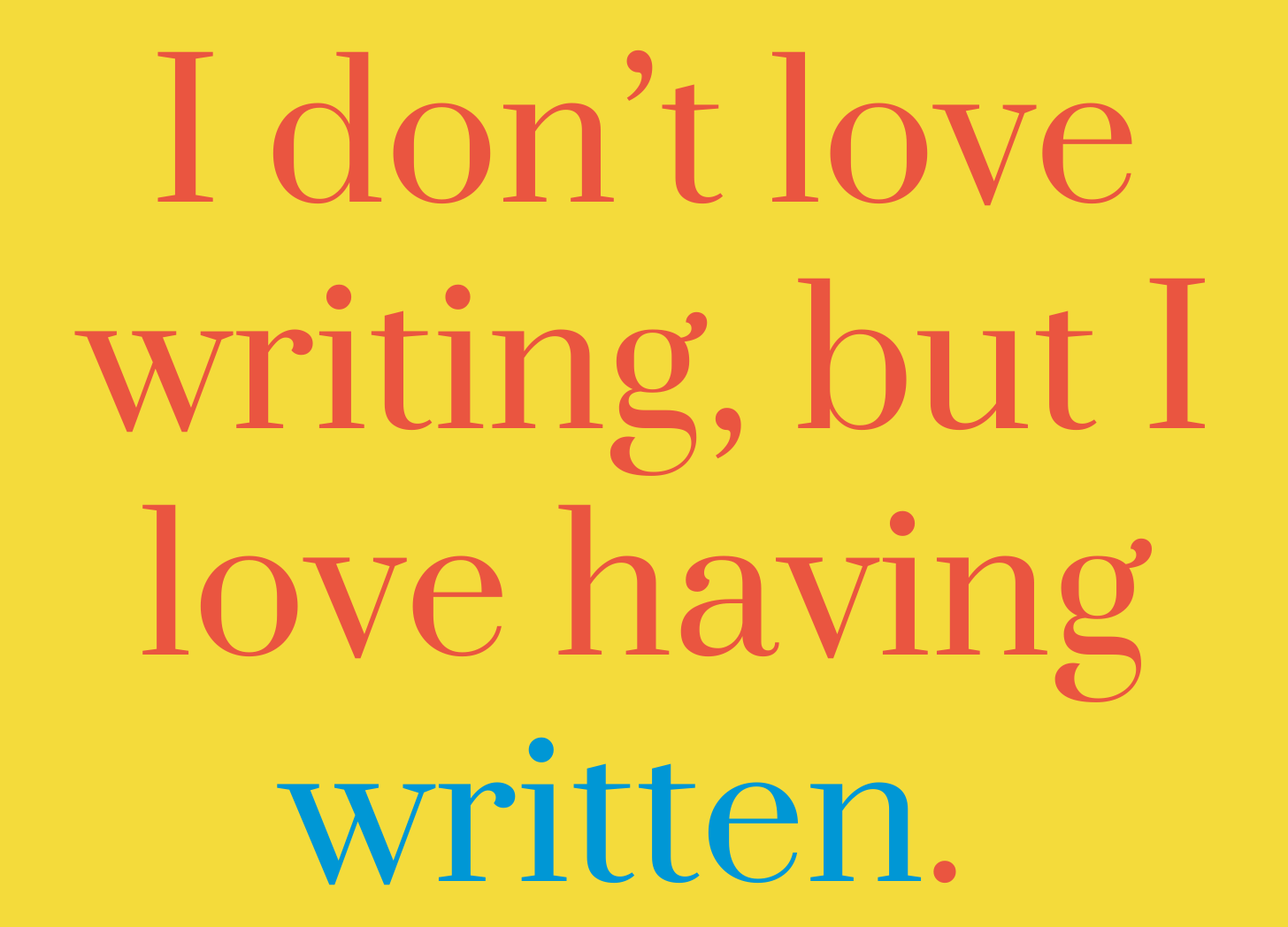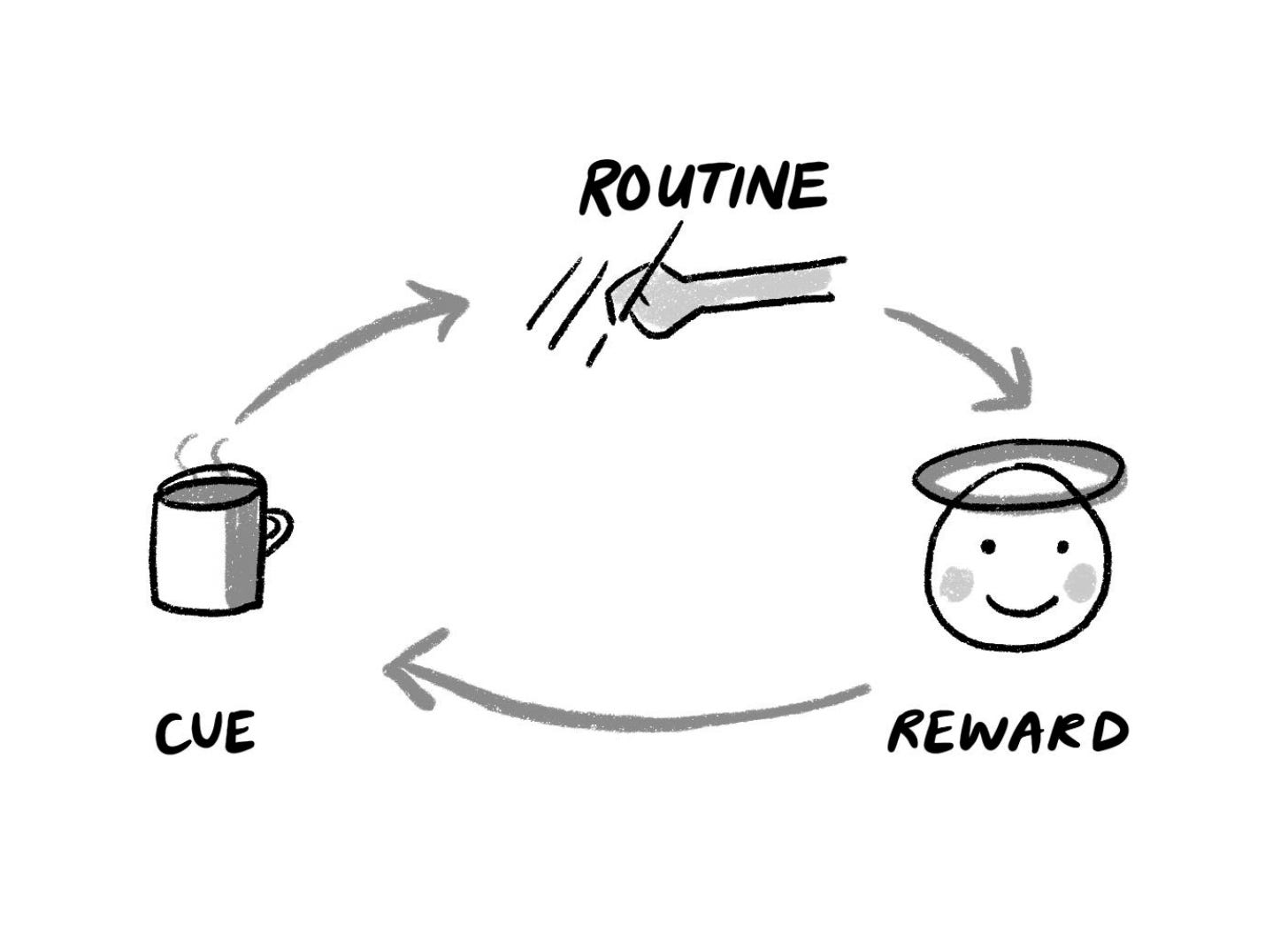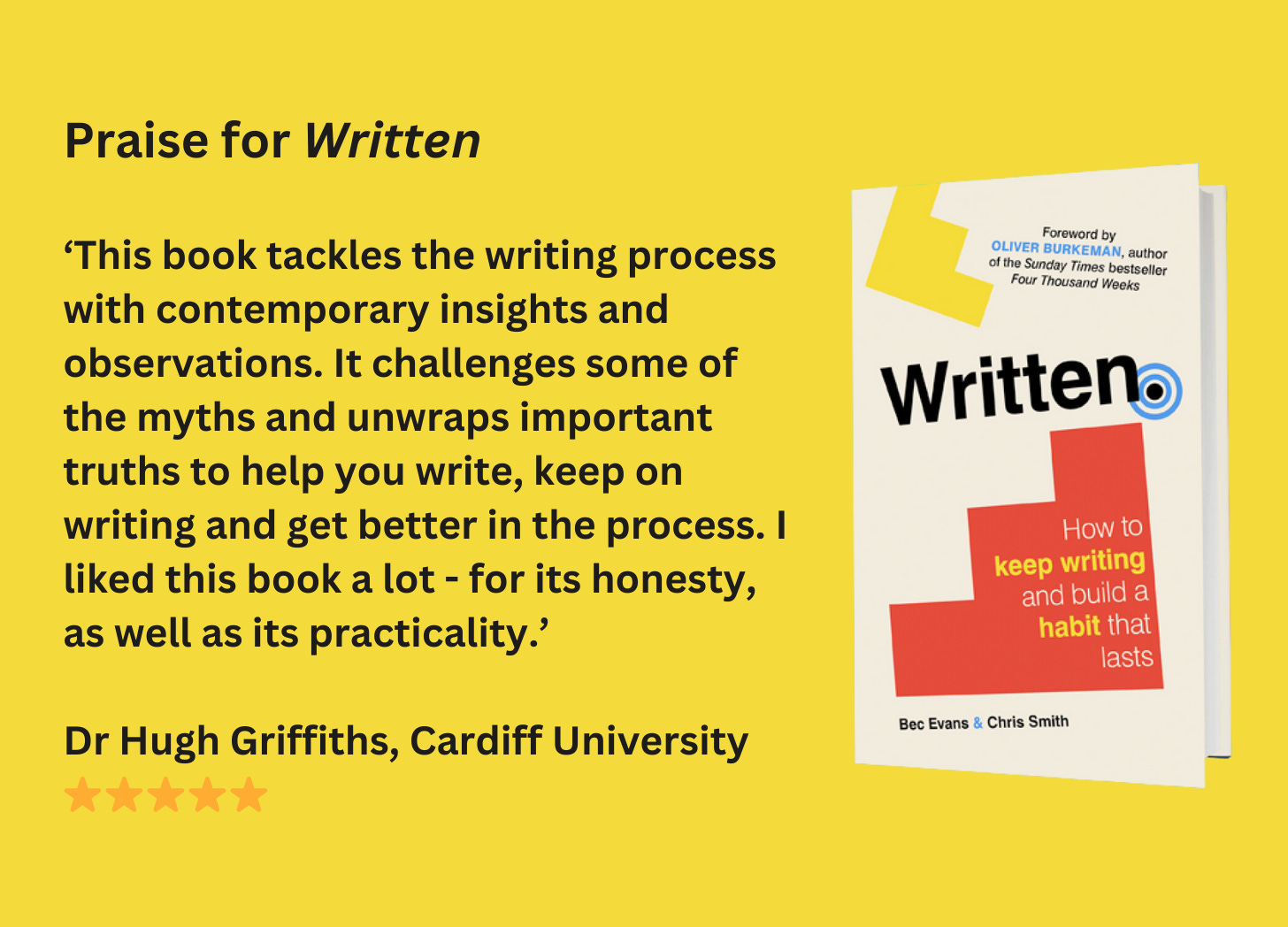What Substack missed about writing habits
The promise of habit - writing consistently without the need for willpower & effort. But writing habits are about more than output. Here's how to build one.
To write successfully on Substack – or indeed anywhere – you need to know why you’re doing it, have a good grasp of who you’re writing for and what to say.
Clear, concise communication is important. Don’t waffle. Your words and your stories must strike a chord with your audience. On top of all that, you’ll need to get your head round having a publication strategy, scheduling, promotion and so on.
Recently, Substack published a three part series considering these kind of topics. It was called ‘how to create a consistent writing habit’ and it was very good. It covered your ‘why’, who you’re writing for, what to write, and where and when to publish. All vital stuff - but it didn’t really tell us how to create a writing habit.
The five Ws are not enough
Writing (and publishing) consistently is the outward sign of having a habit. What the series didn’t talk about was how to create a habit in the first place – something our work tells us is the biggest barrier of all.
We’ve coached hundreds of writers over the years and in general, people aren’t put off writing because they don’t know about the nuts and bolts - journalists would call this the five Ws: Who, What, When, Where and Why. You need this know-how of course, but the writing doesn’t miraculously happen just because you have it.
People falter, never start, or come to a grinding halt because of a mixture of internal and external barriers: because they procrastinate, get distracted, feel overwhelmed, face criticism, lack confidence or feel intimidated, etc. The list of what gets in the way of writing is long!
When you write, at some point you have to sit down and write. But this brings with it a whole other set of challenges. Challenges that, more often than not, are rooted in the knotty ball of human emotions, fears, worries, hopes and dreams that we all have.
It’s complicated!
We start our book Written: How to Keep Writing and Build a Habit that Lasts with a quote from Jimmy McGovern, a British scriptwriter best known for writing the hit TV drama Cracker. The quote is this:
I don’t love writing, but I love having written.
While McGovern said those words (we know because Chris heard him say them on a morning news programme in July 2022 and burnt some toast in the process1), those words, or words very similar, have been attributed to a long list of writers, thinkers and artists over the decades. People like Robert Louis Stevenson, George R.R. Martin, Dorothy Parker and Gloria Steinem - to name a few. To us, this suggests that the feeling of love they ascribe to having written has some universality. And it’s not just for famous writers whose work has led to success; it speaks of a sentiment that all writers experience whatever they are writing and whatever stage they are at.
We know because in the past decade we have interviewed, spoken to and worked with many thousands of writers. What they all want is a habit. But having written is not the process of habit but the output. To understand habit we need to look at what goes on inside the brain.
What is a habit?
In short, a habit is a behaviour which, through repetition, becomes automatic.2 Professor Wendy Wood found that 43% of what we do every single day is habitual, often done while thinking about something else. She said that people are:
automatically responding without really making decisions. And that’s what a habit is. A habit is a sort of a mental shortcut to repeat what we did in the past that worked for us and got us some reward.
Wood, the foremost researcher of habits whose work has been popularised and simplified by many writers, explains that there are three bases to effective habit formation: repetition, context and reward. Let’s take a closer look at the neuroscience of habits.3
The habit loop
To build a new habits, or ditch an old one, we need to understand the habit loop. This simple yet powerful system explains what goes on inside our brains when we trigger a habit and how that affects what ‘routine’ we do, repeatedly.
Let’s look at an example of how bad habits develop.
Say you you know what you want to write and you have scheduled time to write it. However, before opening your work-in-progress you get a notification to check your inbox and spot that your boss has sent you an email (the cue). All of a sudden you’re diverted away from your writing. In answering that email (routine) you’ll get a hit of dopamine (the reward) which means that behaviour is more likely to be embedded. Before you’ve had time to think about it, you’ve triggered a different habit to the one you intended.
Image credit: Graphic Change for Written
When Wood says that context is the base for habit, she’s talking about our environment, the things around us that trigger behaviour. In our email example, we get distracted because the email from the boss is right in front of us, it feels urgent and also sending a reply is often easier to do than the thorny writing project we should be attending to.
The good news is that we can design our environments in such a way as to encourage writing habits and so, make writing more routine-like and so, easier to do - and when things are easier to do we are more likely to do them. For example:
➡️ Introduce positive writing triggers - for example, set up a notification for your scheduled writing time, leave yourself a note on what to write next so it’s easy to find your way in, or write a pep talk to focus on writing and not other admin.
➡️ Remove distracting cues - put your phone in a different room when you write., switch off notifications, wifi, or use an internet blocker like Freedom.
➡️ Reward your writing routine (with a cheer/cake/coffee/celebratory dopamine hit of your choice) to embed that behaviour.
A month of habits
Over the next few weeks we’ll dive deep into the theme of habits - chapter 8 of our book - and we’ll explore the knotty ball of emotions and fears that stop us writing and some of the things that make it more likely we’ll keep going.
Keep writing :)
Bec and Chris
Five books on habit
The OG Professor Wendy Wood, Good Habits, Bad Habits: The New Science of Making Positive Changes That Stick
Popularised by Charles Duhigg in The Power of Habit: Why We Do What We Do and How to Change
Simplified by James Clear in his multi-million selling Atomic Habits: An Easy & Proven Way to Build Good Habits & Break Bad Ones
Personalised by Gretchen Rubin Better Than Before: What I Learned About Making and Breaking Habits—to Sleep More, Quit Sugar, Procrastinate Less, and Generally Build a Happier Life
Tailored for writers Bec Evans & Chris Smith Written: How to Keep Writing and Build a Habit that Lasts
Habits are by definition automatic, more of a reflex than a choice. There have been many studies that measure how long it takes for ‘automaticity’ to kick in and a habit to stick. Before you ask, there is no milestone number of repetitions to hit – research and rumour have suggested everything from 21 to 66 days, but the answer depends on what you are trying to do, the driving forces and the context in which you find yourself.
While it’s debatable that writing can ever be something we do habitually in the strict neurological sense, the routine is hard and requires mental effort, but we believe that by understanding what goes on inside our brains, we can make it more likely for writing to happen, for example by reducing the barriers to writing and increasing the cues.








